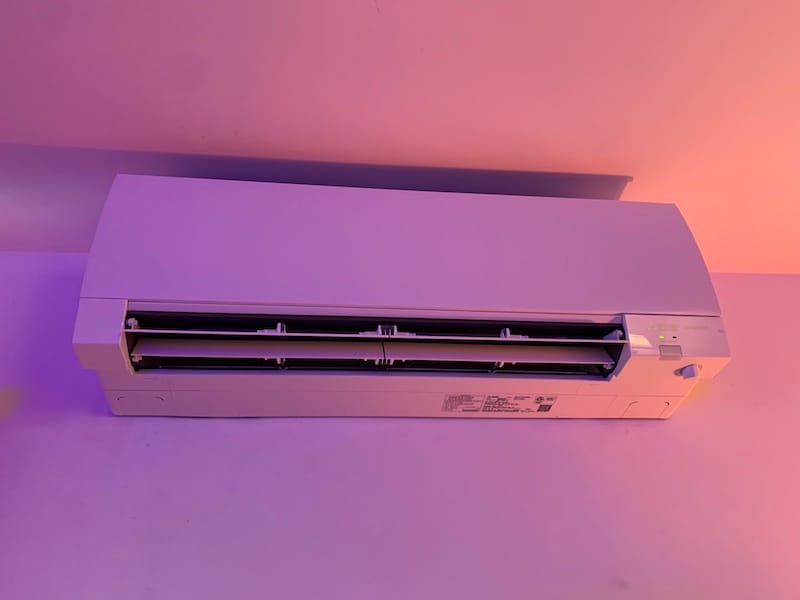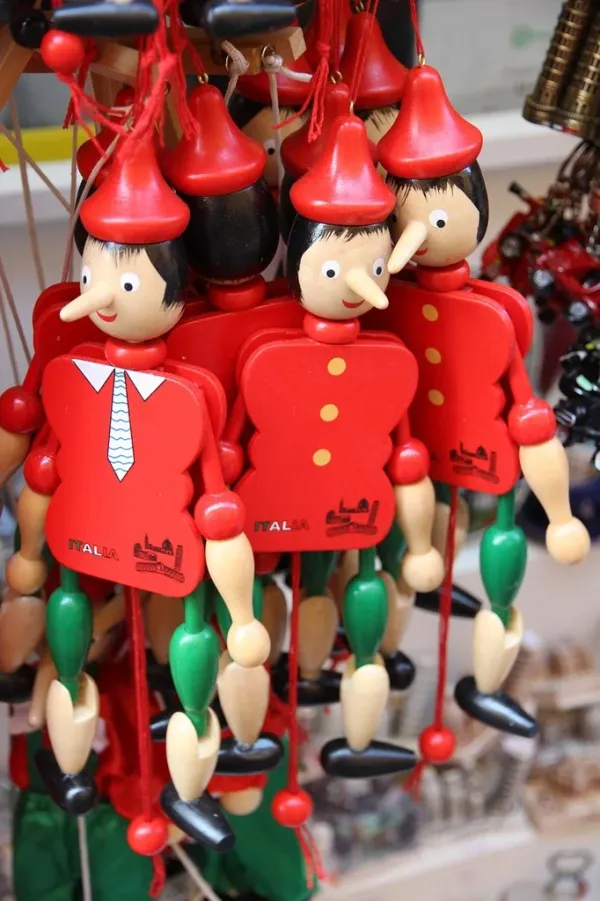I switched to heat pumps. Then the polar vortex hit.
How do heat pumps hold up in the most brutal cold snaps? Here’s what I learned from last Friday's subzero weather.

Call me crazy: I was ready for the cold snap. Hell, I was excited. When Hudson Valley Weather forecast lows down to -15 Fahrenheit in the Catskills on Friday night, I thought, This is it. This is the one I’ve been waiting for.
I got heat pumps installed last March: a five-unit air source mini-split system, big enough to take over the task of heating my 2,300-square-foot three-story Victorian from my old propane furnace.
The week the heat pumps went in, nighttime temperatures in Margaretville got down to 10 degrees. My new heating system did just fine — and the heat pumps’ performance did a lot to reassure me that I hadn’t made an insane decision in my personal quest to decarbonize. But a 10-degree night is hardly the worst thing Catskills weather can throw at you.
Start writing today. Use the button below to create your Substack and connect your publication with Empire of Dirt
Since last March, I’ve been waiting for a really cold night to show me what my system is made of. Something that would challenge the technical limits of my five Mitsubishi “hyperheat” air source mini-splits — which, according to their maker, begin to drop in heat output around 5 degrees and will operate at least down to -13.
As fate would have it: -13 is exactly how cold it got in Margaretville that night.
The Challenge
I got my wish. On Friday, the polar vortex descended on us with a vengeance. By around 9pm, it was already -6 and falling fast. Over the sound of the wind howling fiercely enough to shake the house, I could hear the heat pump compressors outside vibrating as they kicked over to their more energy-intensive second stage.
The heat pumps — set to 68 — were registering a balmy 72 on my old thermostat. The house was still warm, although the floors downstairs were getting unpleasantly chilly, a problem I’ve never been able to totally solve with either propane or wood heat.
A saner person probably would have fired up the woodstove just in case. Instead, I fired up Twitter to let the internet know I hadn’t frozen to death.
By midnight, it was -11 outside and still falling. The heat pumps were beginning to show signs of maxing out: the house had lost a single degree of heat.
Temperatures didn’t climb up into the single-digit negatives until well after sunrise. By around 7am, it was still -10 outside. Downstairs, the heat pumps had lost a little ground in the long battle. Upstairs, the bedrooms were still warm and cozy.
There was a casualty: one of the more ancient and poorly-located copper pipes in my basement froze and sprang a leak, not for the first time. On further investigation, a missing basement window that I “fixed” ages ago by duct-taping some insulation over it blew wide open in the night. Unlike the heat pumps, the tape was no match for -13 howling winds.
Still, victory was mine. The long cold night brought the Mitsubishis to the edge of what they were expected to perform, and they kept my house as toasty as it ever gets in such brutal weather. They did their job at temperatures well below the standard “design day” that HVAC contractors use to size heating systems in upstate New York: In Albany, state building code says systems must be able to handle a -1 degree day.
And I must say: Last weekend beat the hell out of that time I ran out of propane on a subzero Sunday and had to beg my supplier for an emergency delivery. Rural life is fun sometimes.
What About Power?
Getting through the night without freezing was only part of the test. It’s a fact that heat pumps, even the best cold-weather models, lose efficiency at lower temperatures. The colder the air they draw heat from gets, the more power they have to consume to move the same amount of heat.
A frequent talking point among naysayers is that heat pumps are horribly expensive to run in cold temperatures — and for older, warmer-weather models, or the kind with backup electric resistance “heat strips” that are typically installed in the Southern U.S., that’s a fair criticism. I’ve written in this newsletter before about how heat pumps could mean dramatic savings on energy for users of fuel oil and propane, but I wanted data. How much power did my Mitsubishis use?
Since I don’t have a smart meter or a household energy monitor, I did it the old-fashioned way. Around 2pm on Saturday, I read my NYSEG meter to see how much electricity the house had used over the course of 24 hours.
I’ve been tracking my power use every few days throughout the season, in an effort to learn more about how my new system performs in different temperatures. Before the heat pumps were installed, on an average January day, I used about 33 kWh. According to my January 2023 electric bill, my average last month was 68 kWh. The heat pumps have roughly doubled my electric use in midwinter, and eliminated my propane bill except for a tiny amount to run the gas stove and dryer.
Between Friday and Saturday, the house used a whopping 147 kWh, more than double the power use on an ordinary cold winter day. At NYSEG’s current rates, I figure that over the course of that day, it cost me about $20 to heat the house and run all of the appliances, including a hot water tank and electrical floor heat in a downstairs bathroom. That’s enough to buy about 6 gallons of propane at current prices.
According to NYSERDA, the average propane-heated house in New York burns about 1,100 gallons a year. With a heating season that runs from October through March, about 180 days, that works out to 6.1 gallons of propane use a day for a typical user.
That settled it for me. The heat pumps won. If they can heat my old Victorian in the frigid Catskills through the bitterest night of the year, for less money than an average heating day costs a typical New York propane user, I’ve seen enough.
Old House Problems
Since I had my heat pump system installed last year, I’ve been fielding a lot of questions from curious neighbors who are thinking about making the leap. One thing I keep telling people: Every old house is different. And New York State has a lot of old houses.
According to the National Association of Home Builders, New York has the oldest housing stock in the country, with a median age of 60 years for owner-occupied homes. Plenty of Catskills houses are twice that old, my own included.
I bought this house in 2013. Since then, I’ve been slowly improving on some of the bizarre decisions its previous owners have made, which have clearly been accreting for generations. The downstairs bathroom addition is especially demented: It was carved out of the end of a wraparound porch, it sits on an uninsulated concrete slab that threatens to freeze in every cold snap, and before I put in radiant floor heat and replaced the old leaky copper pipes under the floor with PEX, it used to send up an enormous, horrifying, fleshy-looking mushroom under the toilet every fall. I wish I’d figured out what species it was before putting an end to it.
One of the best decisions I’ve made in this house was to put some proper insulation in it before I moved in. The entire third floor and one of the bedrooms have spray foam insulation, and the lower floors have blown-in cellulose, thanks to a NYSERDA loan that I’m still paying off on my electric bill.
Despite the insulation, I’ve struggled with freezing pipes for years. A targeted additional hit of spray foam in an outside kitchen wall, where most of the pipes pass through, solved most of those issues a couple of years ago. But in weather like last Friday, it’s not unusual for a pipe or two to be knocked out of commission.
The sheer size and age of the house has made it a perpetual challenge to heat, even with the insulation. Before installing the heat pumps, in an effort to keep both energy bills and emissions down, I relied heavily on the woodstove, keeping it running almost around the clock and using the propane furnace as backup. I turned the thermostat down to 55 degrees on most nights, and usually woke up to a cold house that didn’t warm up until I got the woodstove going. In the winter of 2021, I burned 430 gallons of propane and about three full cords of wood.
The heat pumps have changed everything. They run more efficiently when they don’t have to heat up quickly, so I tend to set them and forget them. Each of my five units operates independently of the others, so if I’m not using an upstairs room for several days at a time, I turn that unit off and close the door.
Now the house is warm in the morning, and the woodstove is a fun occasional activity for a cozy night instead of a part-time job. The heat pumps act as air conditioners in the summer, and for someone who has never lived in a house with central air, they still feel like an unfathomable luxury on hot summer nights.
I Love Them, But They’re Not Perfect
Watching my heat pumps cope with Friday’s weather was pretty reassuring. But the system has its limits, as I’m learning.
The switch to heat pumps has made my already-cold basement even colder. I didn’t have any issues with pipes on 2022’s frigid Christmas Eve, when it got down to -5. But even after I fix that window properly, I think I need to insulate the rim joists to really be sure it won’t freeze in the worst weather. Sometime down the line, it might be a good idea to put another mini-split unit in the basement. I’ve heard from other neighbors who have recently gotten heat pumps that unheated basements are a potential trouble spot; if you’re considering making the switch, it’s certainly something to talk to your installer about.
Also worth an in-depth conversation with your installer: Humidity issues, which can be exacerbated by the wrong size heat pump system, and air flow issues that can leave rooms without their own mini-split unit chilly. I haven’t encountered problems with either of these in my house, but it’s something to keep an eye out for.
Power outages are another thing to consider. For me, as for many Catskills residents, the woodstove is my defense against a downed power line. I don’t have a generator, so my propane furnace would not have operated in a power outage anyway. But those who rely on a generator to run a furnace or boiler in an outage will find that it may not be able to keep up with the much-greater power needs of a heat pump.
Those who live in truly frigid climates — like the Adirondacks, where temps went down to the negative 20s and 30s on Friday — will need backup heat in order to use air source heat pumps. Ground source heat pump systems, also known as “geothermal,” don’t lose efficiency and capacity in deep-negative temperatures the way air source units do, and are better suited to areas like the North Country. But they are more expensive to install, and require drilling on the property to install an underground closed loop that the system can pull heat from.
Up-front expense is one of the biggest challenges involved with installing heat pumps, even the more economical air source variety. My system — five independent mini-split units, each with its own outdoor compressor and indoor air handler — cost me about $17,000 to install, after a utility Clean Heat incentive and a per-unit manufacturer discount. I financed it all with no money down through my installer, New Paltz-based Rycor, with a loan that has me paying about $240 a month. Between that and my $88-a-month NYSERDA loan for insulation, I’m making the equivalent of a monthly car payment on clean tech in exchange for much-reduced energy bills and an end to fossil heat.
Starting in 2023, thanks to the recently-passed Inflation Reduction Act, there are an array of new tax credits and rebates available to homeowners for insulation and weatherization, heat pumps, electrical panel upgrades, rooftop solar, and more. Some have no income limits. Others offer more generous incentives to lower-income households. If you’re considering clean-energy home improvements, it’s worth investigating the federal IRA incentives as well as NYSERDA’s Clean Heat and Comfort Home programs.
I’ll leave you with a piece of excellent advice I got from a contractor: The best way to switch your house over to clean energy is to do it in stages.
-Insulate first. Otherwise, you might end up with a heating system that’s larger and more expensive than it needs to be, or else struggles to keep up in bad weather.
-Heat pumps are next. Size your system to your house’s needs. Installer expertise is key to making sure you have the right system for your house.
-Solar is last. If you want to install rooftop solar, the best time to do it is when you have a full year’s worth of data on how much power your house uses with heat pumps.
What About the Big Picture?
In this issue of Empire of Dirt, I’ve kept the focus on the small scale: What’s the experience like for a homeowner who retrofits an old house and gets rid of fossil fuels? How well do heat pumps work in cold weather? What are the main challenges involved, on the personal level?
Stay tuned for a future issue where we’ll get into the role heat pumps play in New York’s emerging climate plan, and what this all means for the power grid. Buildings are New York’s single largest source of emissions, producing about a third of the state’s greenhouse gases, and in the effort to tackle that problem through policy, heat pumps play a starring role.
Heat pumps don’t generate heat, they just move it around. The best ones operate at efficiencies greater than 300 or even 400 percent. Because of their incredible energy efficiency, they are a powerful tool for slashing greenhouse gas emissions, even on dirty fossil-fueled grids. On a cleaner grid like upstate New York’s, where most of the power is coming from low-carbon hydro, nuclear, and renewables, shifting to heat pumps will wring almost all of the emissions out of the task of heating a building. But as more people adopt them, they’re going to change the shape of the energy problems we need to solve on a broader scale.
We’ll discuss.
FROM THE EDITOR: As you may have noticed, this newsletter has been on hiatus for the past month. I’ve spent 2023 so far being deeply useless: I fought off a second round of COVID in early January, and although I bounced back pretty quickly on the physical side of things, it definitely took a toll on my brain. I’m on the mend, but overall, I spent January mostly feeling like I got concussed with a longsword pommel.* I already had ADHD before I got sick. Now I have turbo-ADHD. Thrilling.
Thanks for your patience while I’ve been recovering important life skills like “being able to sustain a thought for more than two minutes,” “reading things,” and “there was supposed to be a third item in this list, it’s around here somewhere.” It means the world to me.
I love this newsletter project, and I’m glad to be back. And to everyone who’s supporting Empire of Dirt with a paid subscription: Thank you especially. Onward and upward. –Ed.
*An experience I’ve also had. Do not recommend.


